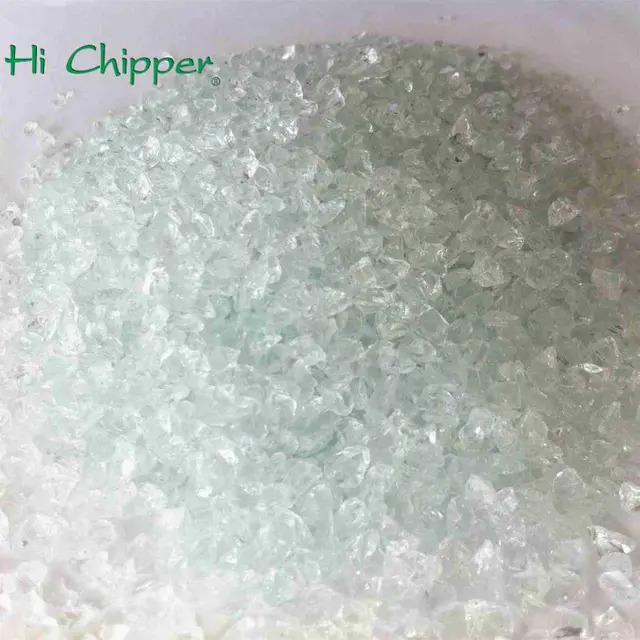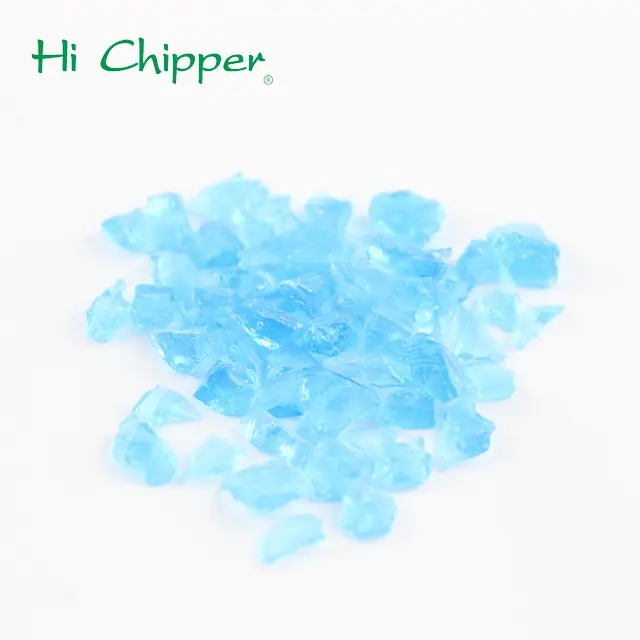- All
- Product Name
- Product Keyword
- Product Model
- Product Summary
- Product Description
- Multi Field Search
Views: 179 Author: Site Editor Publish Time: 2025-09-26 Origin: Site








Crushed glass is a material that has become increasingly valuable across industries, ranging from construction and manufacturing to art and sustainability initiatives. While many people encounter it in different contexts—such as recycled bottles turned into sand, abrasive blasting media, or eco-friendly aggregates—the terminology used to describe crushed glass can vary widely. Understanding what crushed glass is called, how the names differ depending on use, and why those distinctions matter helps clarify its role in modern applications.
Crushed glass is not identified by a single universal name. Instead, the terminology shifts depending on its processing, grain size, and purpose. Some of the most common names include glass aggregate, glass cullet, glass sand, and glass grit. Each of these names reflects a specific form or application of crushed glass. For example, "cullet" is the industry term for recycled glass prepared for remelting in glass manufacturing, while "glass grit" often refers to coarser crushed glass used in abrasive blasting. "Glass sand" describes finely crushed particles similar in texture to natural sand, making it suitable for construction and landscaping.
| Common Term | Typical Use Case | Particle Size Range |
|---|---|---|
| Glass Cullet | Recycled into new glass products | Mixed, medium to large |
| Glass Aggregate | Concrete, asphalt, landscaping | Coarse to medium |
| Glass Grit | Abrasive blasting, surface treatment | Medium to coarse |
| Glass Sand | Sandblasting, construction, filtration | Fine |
This table shows how terminology aligns with different industries, illustrating that "crushed glass" is an umbrella phrase rather than a single technical term.

One of the oldest and most widely recognized terms for crushed glass is glass cullet. Cullet refers to broken or crushed glass that has been collected for recycling. In the glass manufacturing industry, cullet is crucial because it melts at a lower temperature than raw materials, thereby saving energy. Manufacturers often distinguish between post-consumer cullet (from used bottles or jars) and pre-consumer cullet (from production scrap). The use of cullet improves sustainability by reducing reliance on raw materials like silica sand and decreasing landfill waste.
Cullet is not only a recycled product but also a cost-efficient raw material. Its widespread use has cemented "cullet" as the primary term in contexts involving glass-to-glass recycling, even though other names exist in parallel industries.
In construction, the preferred term for crushed glass is glass aggregate. Aggregates are materials used in combination with cement, asphalt, or other binders to form composite building products. Crushed glass aggregate provides a sustainable alternative to traditional gravel or sand. It can be used in concrete mixes, road base layers, and landscaping projects. Its angular shape improves binding strength in concrete while also offering aesthetic benefits in decorative applications.
For green building projects, glass aggregate stands out due to its eco-friendly profile. By substituting natural resources with recycled glass, construction companies reduce their environmental footprint. This terminology—aggregate—clarifies that the crushed glass is being used structurally rather than melted or refined.
When crushed glass is processed into very fine particles, it is often called glass sand. This term describes material that closely resembles natural sand in size and texture. Glass sand is used for sandblasting, water filtration, golf course bunkers, and even beach replenishment projects. Its sharp edges make it more effective for abrasive cleaning compared to traditional silica sand, while its inert chemical composition makes it safer and less toxic in many environments.
Some regions promote glass sand as a sustainable replacement for mined silica, reducing the environmental damage caused by sand extraction. Thus, "glass sand" serves as the most accurate name when the crushed glass has been ground down to granular levels suitable for sand-like applications.
For abrasive blasting and industrial surface treatment, the term glass grit is often used. Glass grit refers to angular crushed glass particles that are larger than sand but still small enough to act as an effective abrasive. It is used to clean metal surfaces, remove paint, or prepare concrete for coatings. Compared to traditional abrasives like coal slag or silica sand, glass grit offers lower dust emissions and reduced health hazards, making it a preferred choice in environmentally conscious industries.
The "grit" terminology emphasizes particle size and roughness, which are key performance factors in abrasive processes. This specialized vocabulary distinguishes glass grit from other forms of crushed glass, underscoring the importance of context in naming.
The name given to crushed glass often depends on industry context, particle size, and intended function. To illustrate, the same batch of crushed bottles could be called cullet in recycling, aggregate in concrete, sand in landscaping, or grit in blasting. This fluidity in terminology can sometimes cause confusion, but it also highlights the versatility of crushed glass across different sectors.
| Industry | Common Name Used | Main Application |
|---|---|---|
| Glass Manufacturing | Cullet | Recycled into new glass products |
| Construction | Aggregate | Concrete mixes, asphalt, decorative concrete |
| Landscaping | Aggregate/Sand | Decorative surfaces, pathways, water features |
| Abrasive Blasting | Grit | Surface cleaning, coating preparation |
| Filtration & Sand Use | Sand | Water treatment, pool filters |
Understanding this naming framework ensures that professionals request and use the correct material for their project.

Regardless of whether it is called cullet, aggregate, grit, or sand, crushed glass offers significant advantages. It reduces the need for mining raw materials, lowers production costs, and minimizes waste sent to landfills. Crushed glass also has versatile particle sizes, making it adaptable across multiple industries. Its durability, recyclability, and safety in comparison to some alternatives (like silica sand) further enhance its value.
From an environmental standpoint, crushed glass contributes to circular economy principles, where waste materials are continually repurposed into new resources. This overarching benefit unites all its different names under one sustainable identity.
1: Is crushed glass the same as glass cullet?
Not always. While cullet refers specifically to crushed glass used in recycling for remelting, crushed glass is a broader term that includes aggregate, sand, and grit used in other industries.
2: What is the difference between glass grit and glass sand?
Glass grit refers to coarser particles used in abrasive blasting, while glass sand is finer and resembles natural sand, often used in filtration, landscaping, or sandblasting.
3: Can crushed glass replace natural sand in construction?
Yes. Glass sand and fine aggregates can replace natural sand in many construction projects, providing environmental and performance benefits.
4: Why is crushed glass considered eco-friendly?
It reduces landfill waste, lowers energy consumption in manufacturing, and minimizes the extraction of raw natural resources.
5: Which industries use crushed glass the most?
The main industries include glass manufacturing (cullet), construction (aggregate), landscaping (sand), and abrasive blasting (grit).